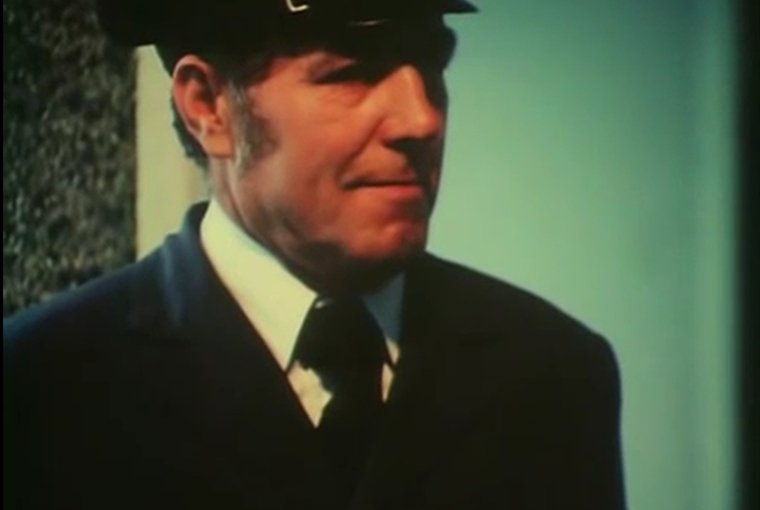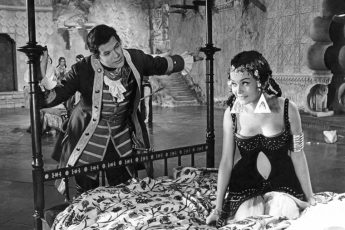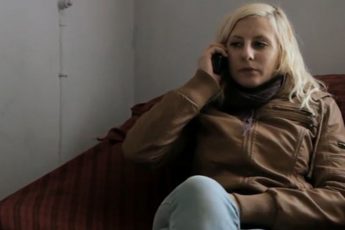
We tend to think of Kieślowski’s cinema through his fiction films. However the director’s career started with documentaries. He studied at the national film school in Łódź and in the beginning he chose documentary over fiction. Documentaries corresponded with the economical model of Poland at the time, fiction being considered as bourgeois. Kieślowski revealed the internal incoherences of the Polish system through short and feature-length TV documentaries. Kieślowski was described by fellow filmmakers as a very determined and demanding man. His written work, which is remarkably precise, would play with censorship and codes of Polish society. His artistic choices were a personal response to the opacity of the system and its propensity for repressing any sort of disobedience while keeping society in a collective state of silence. In the 1970s the director was mainly interested in those aspects of Poland which were not being represented. The subtlety and density of his point of view as well as the way in which he communicated it with the spectator – despite the barriers of censorship – make Kieślowski a major post-war documentary filmmaker.
Before the Three Colors trilogy, one finds in Kieślowski’s work a cinematographic grammar that resembles that of documentary. In his scriptwriting process, the director significantly concentrates on looks, gestures and objects (an example of this technique is the opening scene Muriel (1963) by Alain Resnais, with whom he shared an obsession with truth). Kieślowski worked in a non-realistic way and yet he would always stick to the point: “When I am too explicit, I cut”1, he would often say in the editing room. Kieślowski directed about twenty documentary films before switching to fiction films in the 1980s. Similarly to the photographer Sebastião Salgado, towards the end of his career Kieślowski partly turns away from people and also from documentary. After photographing the genocide in Rwanda and the famines in Africa, Salgado felt overdosed by humans as photographic subjects. When Kieślowski filmed the brutality of the Communist regime he struggled with the same psychological phenomenon; both men consumed human reality to the point of disgust. Contrary to Salgado, who turned away completely from humans and started photographing nature towards the end of his life, Kieślowski continues to study human beings but through a different path, that of fiction. This change allows him to protect himself while continuing to create unique art works about the human condition. Kieślowski’s cinema is free and addresses social and political issues with subtlety. The director has always been intrigued by the inner world of his characters. The night before the shooting of Three Colors: Blue, he says to Juliette Binoche: “What interests me the most is your intimacy”2. There is a strong continuity in Kieślowski’s work. It is the constant dialogue between documentary and fiction which makes it important to revisit some of his early documentary films.
From a Night Porter’s Point of View (’15) and Curriculum Vitae (’29)
“I give mysteries rather than explications” Kieślowski once said in an interview. His documentary approach is focused on Polish society under the yoke of communism. The objective of documenting, either through photography or through cinema, is to raise questions on specific issues or stories rather than to give answers. Like in his fiction films ten years later, Kieślowski turns his documentaries closer to his characters. The “microscopic camera” becomes a way for Kieślowski to protect himself from as well as to project himself onto society.
From a Night Porter’s Point of View (Z punktu widzenia nocnego portiera, 1977) is the portrait of a young night watchman. “I love war films (…) films that are aggressive,” the protagonist says in the beginning of the film. Kieślowski cleverly depicts the authoritarianism of the Polish regime through the eyes of this authoritarian and litigious character. We get to know him during an arrest where the man tries to impose order in a neighborhood of Warsaw; later on we see him training his dog to become more aggressive. Through voice-overs the watchman presents his view of Polish society, of young people and their “unjustified” criticism of the state. The regime’s discourse is imposed on the viewer through a game of montage, in which Kieślowski reconstructs the face of authority with the most symbolically representative voice.
Then the Polish director enters the intimate world of the watchman’s house where the character rigorously shows his son how to fix his tie. The last scene of the film is a face-off between the watchman, dressed in a strict uniform with military decorations, and the young children of a school whose teacher asks with naivety, “What is this?”. Kieślowski describes the danger that lurks behind such authority by not answering the teacher’s question.
In another remarkable short documentary film, Curriculum Vitae (Życiorys, 1975), Kieślowski creates an oppressing atmosphere behind closed doors. At the center of the film is the trial of a comrade who “voluntarily” let a strike burst out in a state mine. Under the pressure of the party and through interrogations, the comrade begins describing his life and his life-long loyalty to the regime. But the “judges” here seem to accuse a man who has already been condemned. Kieślowski stages a scene without artificial elements where he films the party’s henchmen, with close-ups on their faces, in the obscure atmosphere of the courtroom. The court is one single voice that incriminates the “defendant”. The main character reminds us of Emil Zatopek, the Czech long-distance runner who was born in Moravia in 1922 and who started training for athletic competitions during the Nazi occupation of Czechoslovakia. After 1948 he became one of the most famous runners in the world and successfully participated in the Olympic Games of Helsinki in 1952. He stopped his career in 1957 and as army colonel and member of the Communist party he becomes a state functionary for the ministry of defense. After the “Prague Spring” he defends Alexander Dubcek and is thus excluded from the Communist party and the army. He is forced to revoke his views, but nevertheless sent to an uranium mine as punishment. Kieślowski, like in From a Night Porter’s Point of View, does not give a resolution to his plot. In the last scene of the film the “judges” ask the “defendant” to leave the room and while he is waiting for his verdict to be pronounced, the viewer almost takes on his subjective point of view. A prolonged waiting for the verdict without a corridor that, like in Emil Zatopek’s case, results in him being excluded from the party and sent to a camp. Curriculum Vitae does not reveal the destiny of the character but rather opens, in this last scene, the possible outcomes of the trial’s decision.
First Love (’52)
Before Kieślowski started to progressively abandon documentary and political concerns, his cinematographic work is marked by metaphysical reflections – questions about the relativism of subjective ideas.
In First Love (Pierwsza Miłość, 1974), we are introduced to Romek, a 18-year-old, and Jadwiga, who is a bit older, and pregnant. The young couple decides to get married. Jadwiga drops out of school and they find a small room together despite all the difficulties caused by their destitution and family. Just after the presentation of the The Double Life of Véronique in Cannes, Kieślowski gave an interview to French newspaper Libération in 1991:
“All we care about is ourselves. Even when we observe others, we still think about ourselves.”3
When Kieślowski films the character of Jadwiga for 18 months, he is really concerned with his own intimacy. The moving camera withdraws in order to follow the intimate moments of the young couple as well as their experience with various administrations. Kieślowski observes the Polish institutions through the difficulties of Jadwiga: the hospital as a place of submission to religion, the administration indoctrinated by the regime, and the militia, which infiltrates the young couple’s apartment. We often see the microphone in frame, which reminds us that we are in truth being confronted with a reality registered by a camera. Grainy images, the handheld camera and a lack of interrelatedness are all part of the director’s cinematographic grammar. It is entirely up to the characters to transmit the narrative, so much so that they sometimes appear to be the film’s only formal elements. When the militia enters the young couple’s apartment, Kieślowski takes some distance and observes while the camera keeps recording. It’s as if he was the first witness of a scene without violence, who is however putting pressure on the young couple that is blamed for having a child at such an early age. Kieślowski later admits that this was one of the scenes that made him slowly turn away from documentary. Ewa, the young baby, is born and takes possession over the thoughts and nights of the young couple. However Romek continues taking courses and working. Towards the end of the film, we follow him on his peregrination, which is accompanied by the sound of a baby’s cry. The use of such montage reinforces the subjectivity of Romek who is overwhelmed by the baby’s presence.
The film only enters progressively into the couple’s intimate life. In the beginning, objects, windows and walls stand between the camera and the characters. The narration is slowly constructed and soon nothing stands in the way of having a clear view of the characters’ faces. The long shots become close-ups and slowly penetrate the interiority of the characters.
Kieślowski’s work has multiple meanings, the stories are always separated, but also interrelated and evolving together. Kieślowski’s strength lies in the liberty he accords to his viewers to identify themselves with what first seems like a story. But the viewers soon realize that it is through those very same stories that they can access the interiority of the narration and of the characters, projecting themselves into their existence.
Transl. by Anastasia Eleftheriou




Leave a Comment